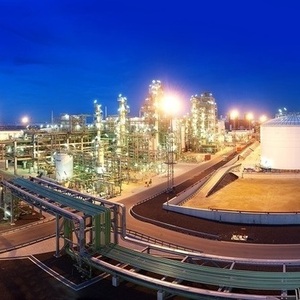Neste evaluates investing in US renewable diesel production

Photo: Neste Corp.
February 9, 2017
BY Ron Kotrba
Renewable diesel producer Neste Corp. is evaluating investment in new production capacity in Singapore and the U.S., the company revealed in its financial statements release.
“Neste will continue to implement its global renewables growth strategy,” stated Matti Lievonen, Neste president and CEO. “The demand for renewable products is expected to continue growing globally.”
The company says its renewables capacity increase program will include debottlenecking of existing production capacity from 2.6 million tons (approximately 810 million gallons) to 3 million tons (936 million gallons) by 2020, and building new capacity.
Advertisement
“We are currently evaluating the feasibility of options to invest in new production capacity,” Lievonen said. “The options under review include locations in the U.S. and Singapore.”
The announcement comes on the heels of Neste’s most profitable year yet with renewables, and speculation whether the new U.S. administration and Congress will extend the lapsed $1 per gallon blenders tax credit as-is or reform the incentive to only benefit U.S. product. The U.S. tax credit has expired five times since 2010 and has been extended four times.
Advertisement
“For the first time [our renewable products division] had the largest full-year profit contribution, which reflects the continuing strategic transformation of the company,” Lievonen said, adding that the renewables segment recorded a full-year comparable operating profit of €469 million. “Our sales volumes reached 2.22 million tons (approximately 686 million gallons), only 2 percent below the previous year, despite of the scheduled major turnaround implemented at the Rotterdam refinery in the second quarter. A slightly higher share of the sales volume was allocated to the North American market compared to 2015. In the U.S. market, the EPA finalized increased volume mandates for biomass-based diesel for 2017 and 2018 in November 2016. Feedstock optimization continued, and the share of waste and residue feedstocks was successfully expanded to 78 percent of total renewable inputs in 2016. Acquisition of a new feedstock pretreatment facility in the Netherlands will further enhance our capability to process lower quality wastes and residues.”
Lievonen referenced particularly attractive markets around the world, including Norway and California. “Norway has set a biofuel target in traffic growing from 7.5 percent in 2017 to 20 percent in 2020,” Lievonen said. “California continues to be an important market for Neste. Sales volumes of the renewable diesel delivered as 100 percent to end-users are expected to continue growing from 15 percent in 2016 to 25 percent of the total renewable sales volumes in 2017. The vegetable oil market is expected to remain volatile, and we aim to expand the use of lower-quality waste and residue feedstock further. The completed acquisition of the new feedstock pretreatment and storage facility in the Netherlands will support this goal.”
Click here for more information.
Related Stories
Luxury North Dakota FBO, Overland Aviation—together with leading independent fuel supplier, Avfuel Corp.— on May 19 announced it accepted a 8,000-gallon delivery of sustainable aviation fuel (SAF) on May 12.
May 21 marks the official launch of the American Alliance for Biomanufacturing (AAB), a new coalition of industry leaders committed to advancing U.S. leadership in biomanufacturing innovation, competitiveness, and resilience.
Neste and FedEx, the world’s largest express cargo airline, have agreed on the supply of 8,800 metric tons (more than 3 million gallons) of blended Neste MY Sustainable Aviation Fuel to FedEx at Los Angeles International Airport (LAX).
The U.S. EPA on May 14 delivered two RFS rulemakings to the White House OMB, beginning the interagency review process. One rule focuses on RFS RVOs and the other focuses on a partial waiver of the 2024 cellulosic RVO.
The U.S. EPA on May 15 released data showing nearly 1.79 billion RINs were generated under the RFS in April, down from 2.09 million generated during the same month of last year. Total RIN generation for the first four months of 2025 was 7.12 billion.
Upcoming Events










